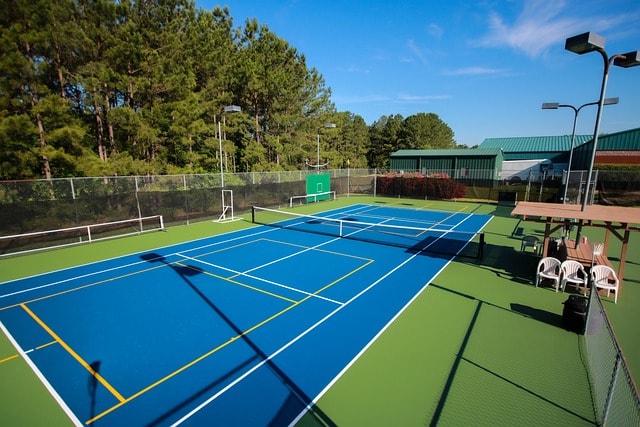Peroneal tendonitis is a common, and often misunderstood, condition. Treatment options can often vary dramatically, and there is good reason for this. Unfortunately, some treatments that dramatically reduce one persons discomfort, may actually aggravate the condition in someone else. It's therefore important to first understand the nature of this condition, and second, be knowledgeable of the many treatment options that have been used to provide relief of this condition.

What Is Peroneal Tendonitis?
Inflammation and pain that is centralized in the peroneal tendons, located on the outside of the ankle and foot, is known as peroneal tendonitis. Suffering from this condition can make physical activities involving the feet painful, and failing to properly treat the condition may result in long-term damage to these tendons.
There are two peroneal tendons that are located in the ankle, and ultimately attach to the outside and bottom of the foot. The purpose of these tendons is to form a connection between the bones on the outside and bottom of the foot and the peroneal muscle located in the lower leg.
Peroneal tendonitis is a condition that can develop as a result of continued irritation in these tendons.
Who is at risk?
Athletes are particularly at risk for developing peroneal tendonitis. Training exercises that are not completed correctly can cause significant amounts of irritation in this area.
Footwear that does not fit properly can also contribute to the development of peroneal tendonitis. Sports that require players to complete repetitive foot and ankle motions can irritate these tendons in the foot or the ankle.
Runners are particularly prone to developing peroneal tendonitis. While it is a popular assumption that people who have a high arch in their foot may experience irritation more quickly that people with a normal arch, this is often not the case.
The condition can also occur in patients who exhibit overpronation, or a flexible flat foot One-time injuries to the ankle may result in the development of peroneal tendonitis.
Chronic ankle sprains are also a particularly common risk factor. It is important for people who are recovering from an ankle injury to be proactive about avoiding additional damage in the tendons. This can be accomplished with the help of your doctor or physical therapist.
Often, arch support insoles or bracing are recommended to accomplish this. Patients with arthritis or weakness in the ankles are also considered to be at risk for developing this condition.

Treatment Options For Peroneal Tendonitis
- Anti-inflammatory medication is a common initial treatment option that is intended to help relieve pain and swelling.
- Initial relief can also be obtained through the use of ice.
- Arch support insoles have often been recommended to control pathological motion of the foot and ankle. In many people, controlling frontal plane motion of the foot and ankle can directly aid in alleviating the symptoms of peroneal tendonitis.
- Inflammation can be reduced when patients avoid intense or repetitive physical activity over a period of a few weeks. A modified exercise schedule can be recommended to prevent inflammation from reoccurring.
- Movement of the ankle can be temporarily restricted through the use of an ankle brace. Braces can be worn at all times or possibly limited to times when a patient is engaging in physical activity that is known to cause irritation to the tendons.
- Physical therapy may be recommended. This treatment option can be particularly useful for active patients who are required to participate in physical activity on a regular basis at work or for recreation. Physical therapists can help patients understand how to properly complete certain exercises or other activities to avoid tendon damage.
- Often, this condition does not require invasive interventions.
The Role of Arch Support Insoles for Peroneal Tendonitis
A common treatment option for peroneal tendonitis is the use of an arch support insole, and less commonly, a custom orthotic.
Arch support insoles are inserts that are placed in the shoes to relieve pressure and reduce incorrect or inefficient movement of the foot during activity. This can frequently be helpful in relieving the pain and inflammation of peroneal tendonitis.
Some studies have even shown that arch support insoles can be similarly effective as custom orthotics in relieving foot pain in certain situations.
While arch support insoles may play a role in reducing the symptoms caused by peroneal tendonitis, they can also be helpful in reducing the recurrence of the condition. By controlling pathological motion of the foot and ankle, arch support insoles can be essential in preventing peroneal tendonitis from becoming a chronic recurrent issue.
If custom orthotics become necessary, they must be designed by a medical professional, particularly a podiatrist. A properly constructed orthotic fits the patient's foot optimally so the intended benefits are maximized.
Outlook For People Suffering From Peroneal Tendonitis
It is common for patients to make a full recovery from peroneal tendonitis. However, it can take a significant amount of time for the recovery process to be completed.
Ongoing prevention methods, such as strengthening exercises, stretching, and arch support insoles, may be necessary for patients to avoid tendon damage in the future. Recovery time is longest for people who need surgery to correct the problem.
As always, it is supremely important to always check with your doctor if you suspect you may have this, or any, condition. Never begin any treatment plan without your doctors guidance.
Check out the Samurai Insoles homepage for more information about arch support insoles. Arch support insoles have been recommended by podiatrists for decades to provide relief from a variety of foot conditions.






